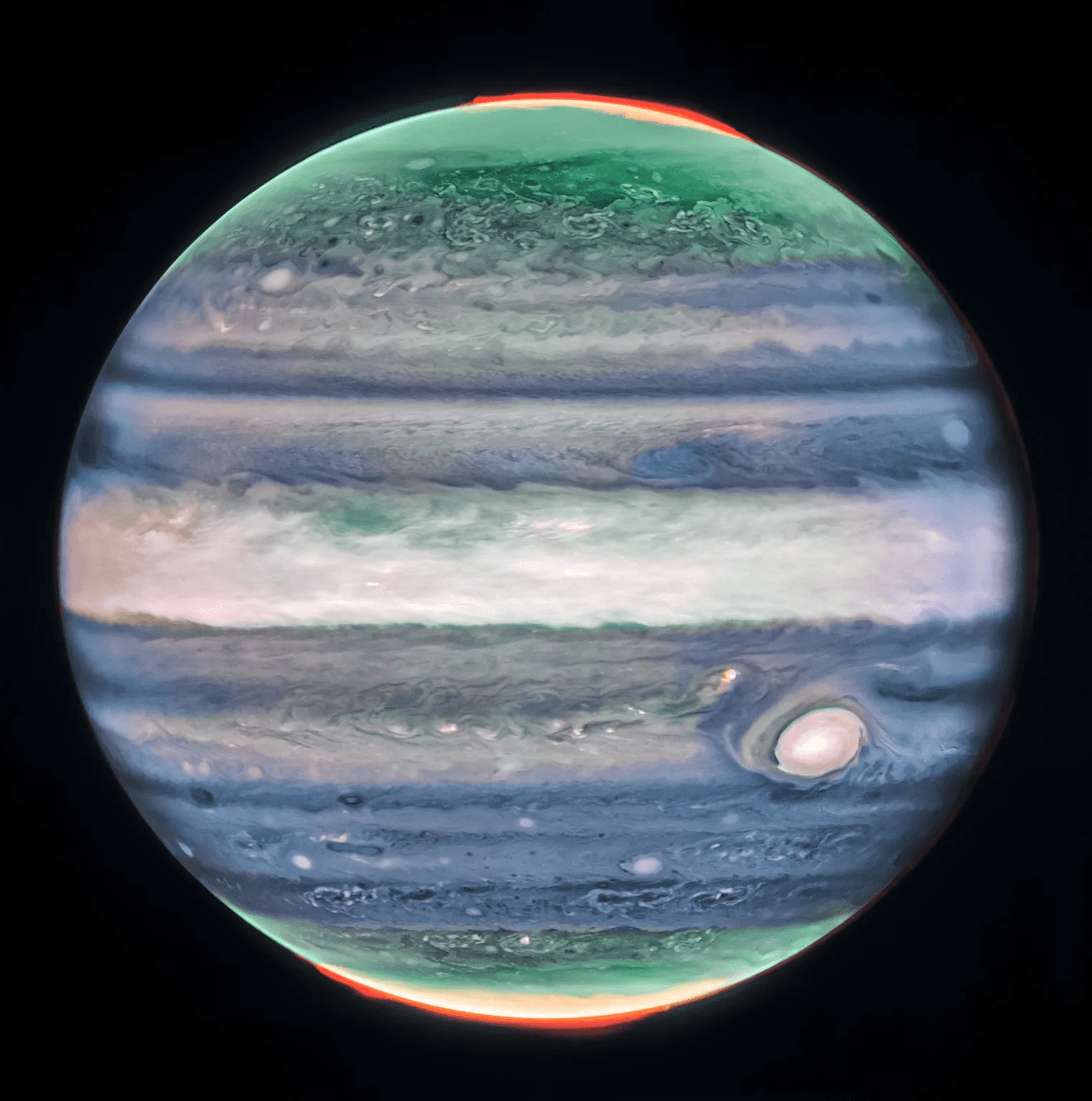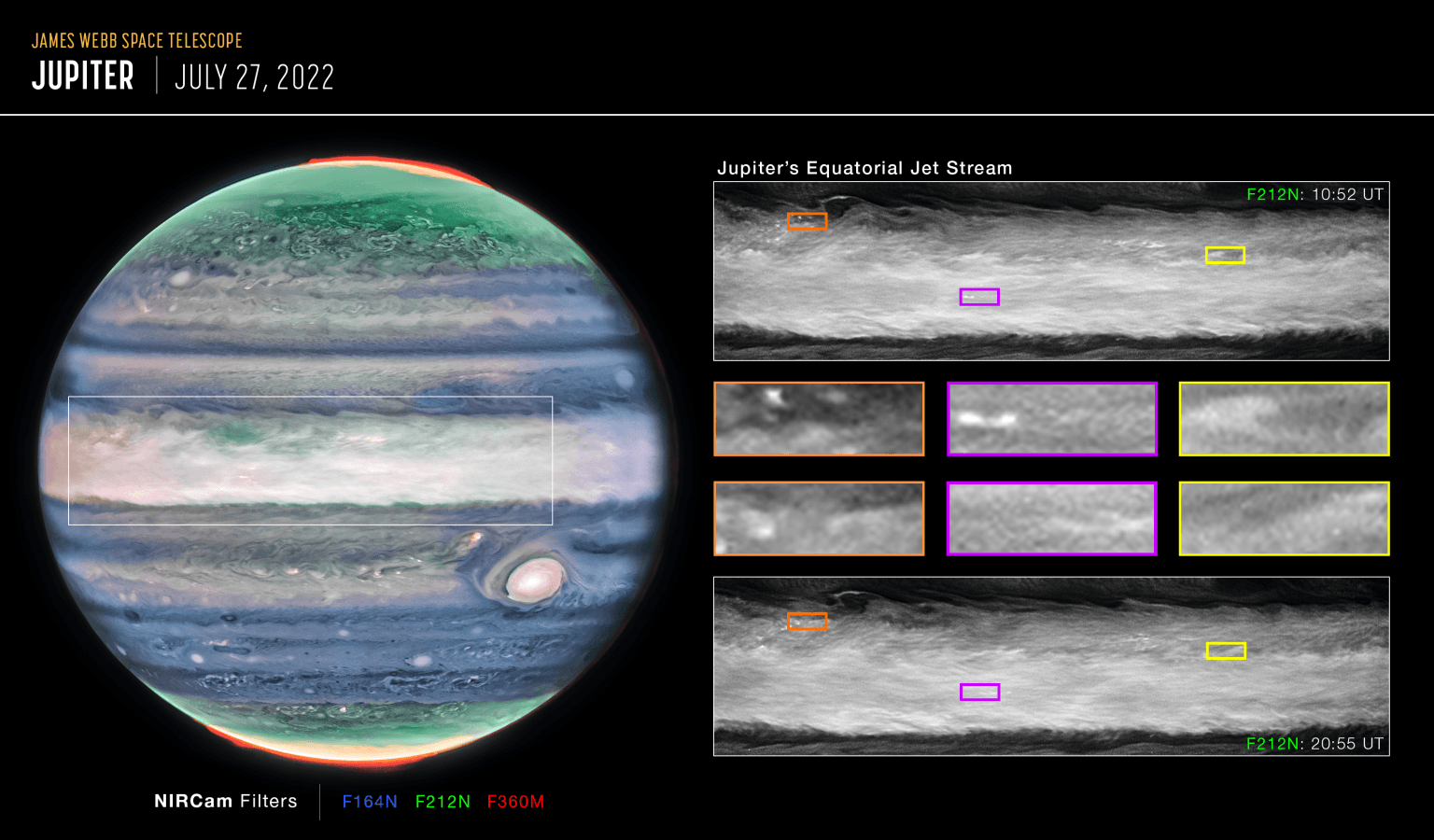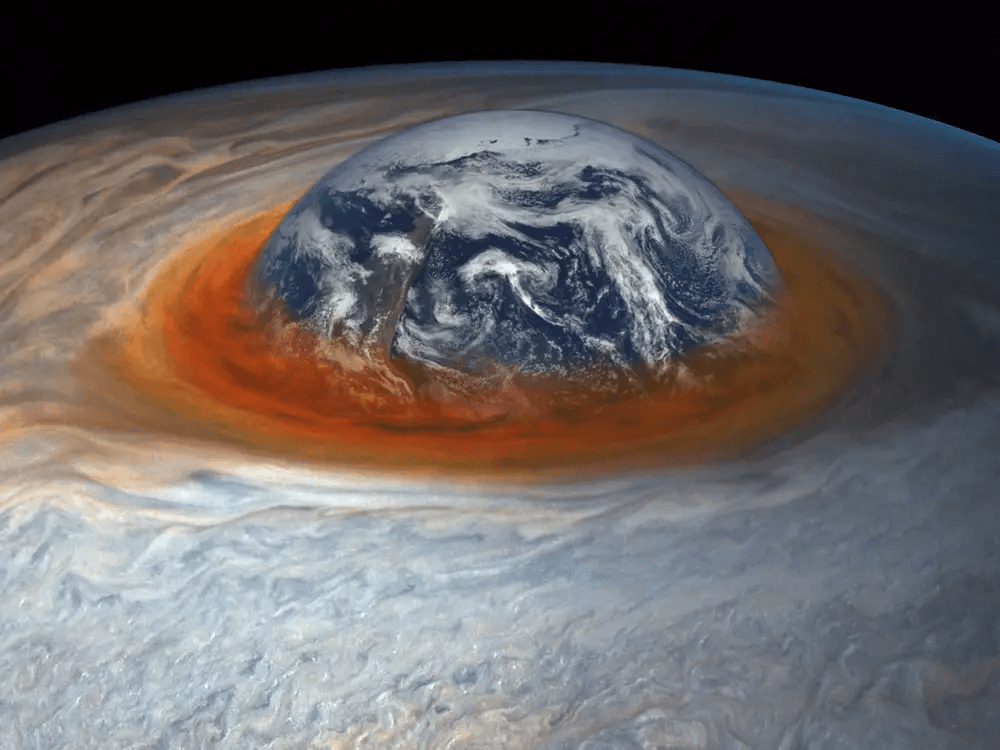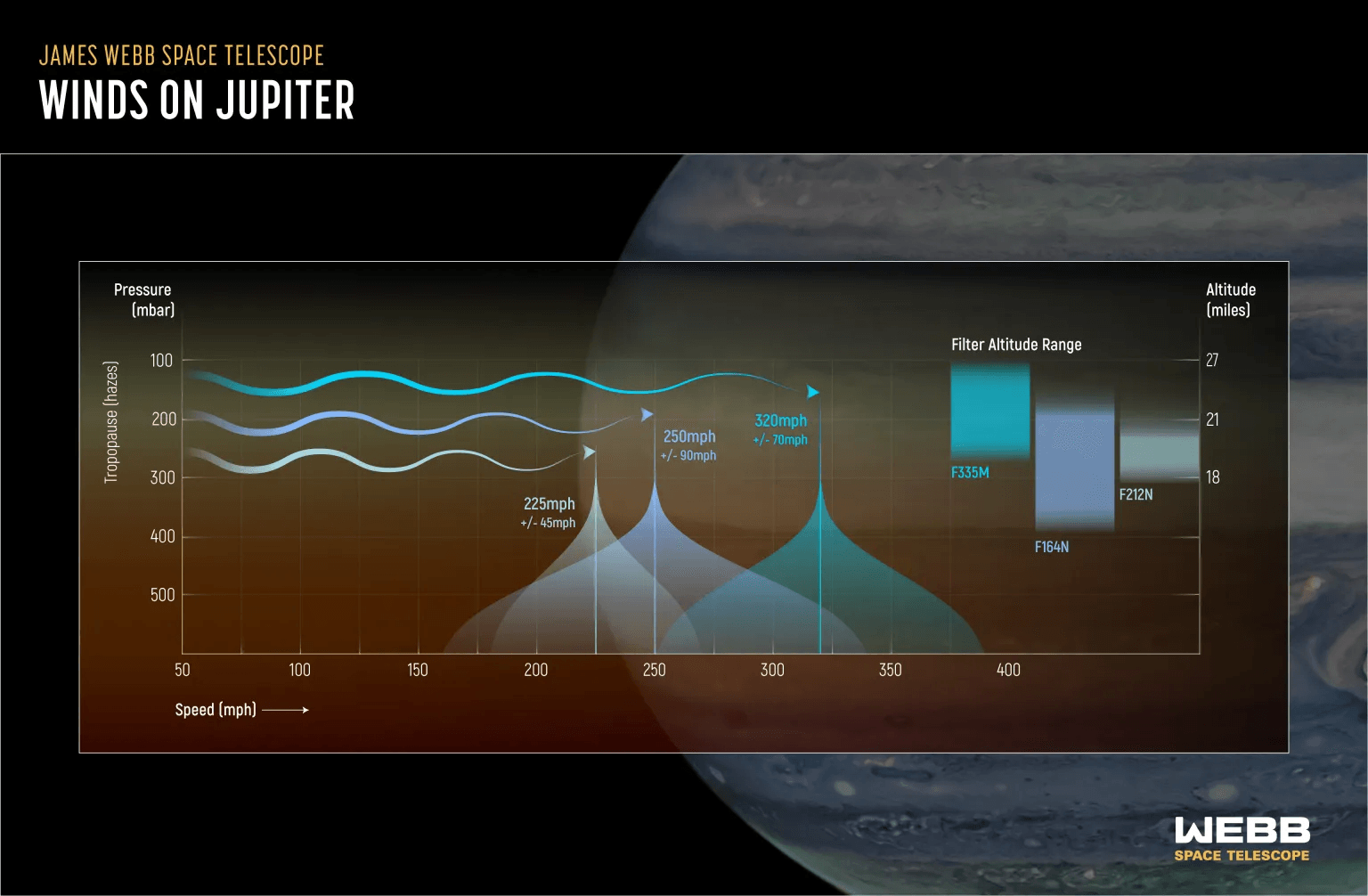Amazing discovery on Jupiter
According to the latest space news from Space.com and NASA , international researchers after analyzing data from the Near Infrared Camera NIRCam mounted on NASA's James Webb Space Telescope discovered an extremely powerful "super hurricane" located on Jupiter's equator, above the main cloud layers.
At a wavelength of 2.12 microns, observed between about 20-35 km above Jupiter's cloud tops, the researchers detected wind shear - that is, differences in wind speed and/or direction over a relatively short distance in Jupiter's upper atmosphere.

This image of Jupiter taken by the Near Infrared Camera (NIRCam) on NASA's James Webb Space Telescope reveals stunning details of the majestic planet in infrared light. Credit: NASA, ESA, CSA, STScI, R. Hueso (University of the Basque Country), I. de Pater (University of California, Berkeley), T. Fouchet (Observatoire de Paris), L. Fletcher (University of Leicester), M. Wong (University of California, Berkeley), J. DePasquale (STScI)
These stunning images from JWST show scientists completely new data about a planet they thought they knew pretty well: Jupiter—the fifth planet from the Sun, and the largest planet in the Solar System—is more than twice as massive as all the other planets in the Solar System combined.
Essentially, after examining images taken by JWST of Jupiter in July 2022, a team of researchers realized that the planet has a Ultra high speed beam (Jet stream, is a high speed narrow stream of air). This jet stream is 4,800 km wide and travels at 515 km/h - something never seen before.
The jet stream lies about 40 km above the clouds, in Jupiter's lower stratosphere.
“That data completely surprised us,” said Professor Ricardo Hueso of the University of the Basque Country in Bilbao, Spain, lead author of the new study.
"It's amazing. After years of observing Jupiter's clouds and winds with multiple telescopes, we still have so much to learn about the planet," said Leigh Fletcher of the University of Leicester, UK, a member of the new study.
What does the latest discovery about Jupiter mean?
The discovery of this Jet Stream provides insight into how Jupiter's famously turbulent atmospheric layers interact with each other and how the James Webb telescope is uniquely able to track those features.
According to the team, this newly discovered Jet Stream on Jupiter — which is moving at twice the sustained winds of a Category 5 hurricane on Earth (on the Western scale) and is located right on Jupiter's equator — could shed light on the gas giant's turbulent atmosphere.

Image of a 4,800 km wide jet moving at 515 km/h on Jupiter. Credits: NASA, ESA, CSA, STScI, R. Hueso (University of the Basque Country), I. de Pater (University of California, Berkeley), T. Fouchet (Paris Observatory), L. Fletcher (University of Leicester), M. Wong (University of California, Berkeley), J. DePasquale (STScI)
Jupiter is famous for its extreme weather. You may have heard of Jupiter's Great Red Spot - it's a giant storm, larger than Earth. It's so big that it can be seen from our vantage point on Earth with a regular old optical telescope.
The Great Red Spot has long been a symbol of Jupiter as it has raged for hundreds of years.

A storm called Jupiter's Great Red Spot is larger than Earth. Credit: NASA/SwRI/MSSS/Gerald Eichstädt/Seán Doran
While Jupiter is different from Earth in many ways—Jupiter is a gas giant, while Earth is a temperate, rocky world —both planets have layered atmospheres.
Infrared, visible, radio and ultraviolet light wavelengths observed by other missions (such as NASA's Juno and Cassini spacecraft, as well as NASA's Hubble Space Telescope and James Webb Space Telescope) will reveal the lower, deeper layers of the gas planet's atmosphere — home to giant storms and clouds of ammonia ice, NASA said.
That's also why Professor Ricardo Hueso and his colleagues hope to compare what JWST's Infrared Camera sees between atmospheric layers at different altitudes of Jupiter with what the Hubble Space Telescope has seen in deeper layers.
They hope that James Webb and Hubble will give scientists a fairly clear picture of those wild winds.
In fact, Hubble images — mainly of the visible and ultraviolet parts of the electromagnetic spectrum — have been a big help, providing information about what the area around Jupiter's equator typically looks like.
"We knew that the different wavelengths of the James Webb and Hubble telescopes would reveal the three-dimensional structure of storm clouds, but we could also use the timing of the data to see how quickly storms evolved," said planetary scientist Michael Wong of the University of California, Berkeley, who led the Hubble observations and was a member of the new study.
In other words, the team explains, that comparison could help us understand how wind speeds on Jupiter vary with altitude and create what's known as "wind shear" on the gas planet.

This image highlights some features around the equatorial region of Mars. Credit: NASA, ESA, CSA, STScI, Image: NASA, ESA, CSA, STScI, R. Hueso (University of the Basque Country), I. de Pater (University of California, Berkeley), T. Fouchet (Paris Observatory), L. Fletcher (University of Leicester), M. Wong (University of California, Berkeley), A. James (STScI)
Jupiter has complex but repeating wind and temperature patterns in its equatorial stratosphere. If the strength of this new high-speed jet is linked to the oscillating stratospheric pattern, we can predict how the jet is likely to change over the next 2 to 4 years.
Although the primary mission of NASA's James Webb Space Telescope is to hunt for mysteries at the farthest horizons of the universe, NASA's "billion-dollar eye" has provided many beautiful images of the Solar System.
With its gold-plated mirror assembly and three instruments housing infrared instruments (such as the Near Infrared Camera (NIRCam)), the James Webb Space Telescope has taken us to a beautiful place we call HOME. The James Webb Space Telescope has even given us an in-depth look at Neptune’s delicate rings – something that hasn’t been done in 30 years.
The James Webb Space Telescope can be considered a "technological wonder" of the US when the country invested 9.7 billion USD to build and operate it.
The study was published Thursday, October 19, 2023, in the journal Nature Astronomy.
Source: Space.com, NASA
Source


































































































Comment (0)